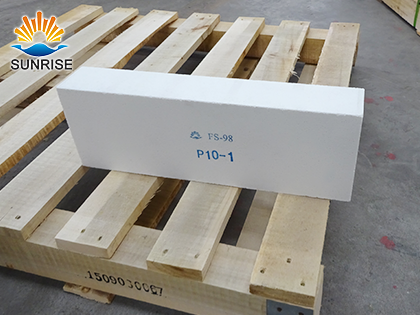Zero expansion silica bricks is High thermal shock resistance and zero expansion silica bricks produced with fused silica as the main raw material, with resistance to thermal shock when warming up, high strength, low expansion rate, acid erosion resistance and many other advantages, it is the best choice for glass kiln as hot patching bricks. The following curve and figures shows the comparison between normal silica and high thermal shock resistance & zero expansion silica bricks. We can tell the high thermal-shock resistance & zero expansion silica bricks has low expansibility.

The following picture and figures shows the comparison between usual silica bricks and high thermal shock resistance & zero expansion silica bricks. We can tell the later has a higher thermal shock resistance.

High thermal shock resistance & zero expansion silica bricks has more advantages, like low expansion and high thermal shock resistance, designed for coke oven and glass kiln in hot maintenance. And it would be repair when the kiln is working, need not stop kiln’s working process. When masonry, we don’t need to reserved expansion joint, it’s an ideal product for coke oven hot maintenance.
►Test report

►Verification results
This product has high thermal shock resistance, low expansion, high content of SiO2 and high density. It is especially suitable for coke oven hot maintenance.
|
High thermal shock resistance and zero expansion silica bricks |
Index |
|
|
SiO2 ≥ |
99 |
|
|
Fe2O3 ≤ |
0.3 |
|
|
Flux index ≤ |
0.4 |
|
|
0.2MPa refractoriness under load (℃) ≥ |
1650 |
|
|
Apparent porosity (% ) ≤ |
22 |
|
|
Cold crushing strength(MPa) |
Unit weight < 20kg ≥ |
35 |
|
Unit weight ≥ 20kg ≥ |
30 |
|
|
True density g/cm3 ≤ |
2.34 |
|
|
Thermal shock water-cooled at 1100℃ (times) |
≥30 |
|

Factory strength »
























